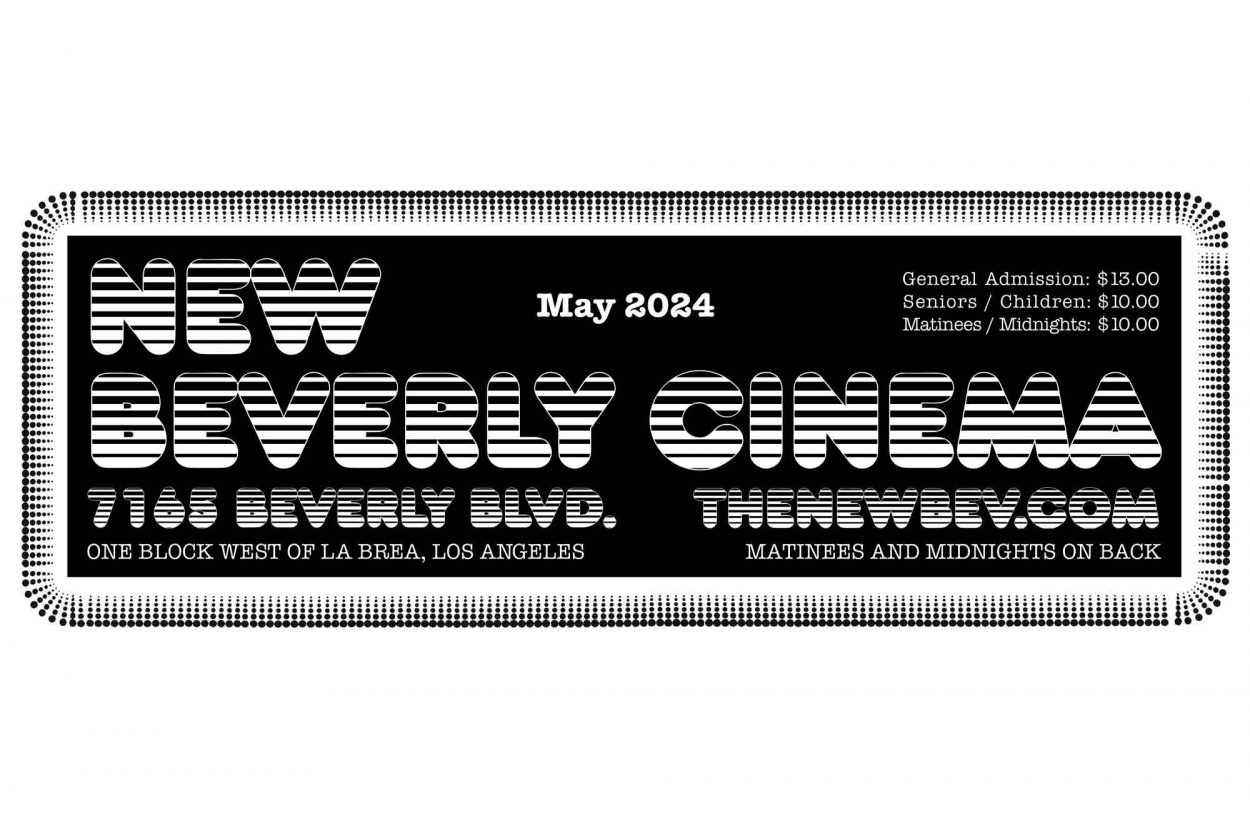Andrew V. McLaglan’s The Last Hard Men is about as violent as you’re going to get for a Western in 1976. Critics have compared the film’s savagery to Peckinpah’s work but this film really tops titles like The Wild Bunch (1969) or Bring Me the Head of Alfredo Garcia (1974) in terms of sheer brutality. The film can be shocking. But it’s great! The brutality of this film is not centered on body count, shots fired or carnage (although all of that is gleefully present), but simply due to the gang being as cold as ice. With the exception of the new member Shelby (played by a young and irresistibly handsome Larry Wilcox), the gang that viciously breaks free from jail and heads into town has no morals. The one quality quintessential to Peckinpah’s outlaws is a kind of personal ethos and code of conduct. What separates McLaglan’s men from Peckinpah’s and makes them even more monstrous is that they have no connection to humanity. They are sociopathic in their exchanges and homicidal in their behavior. Is this a western or a horror film? It’s a little of both.
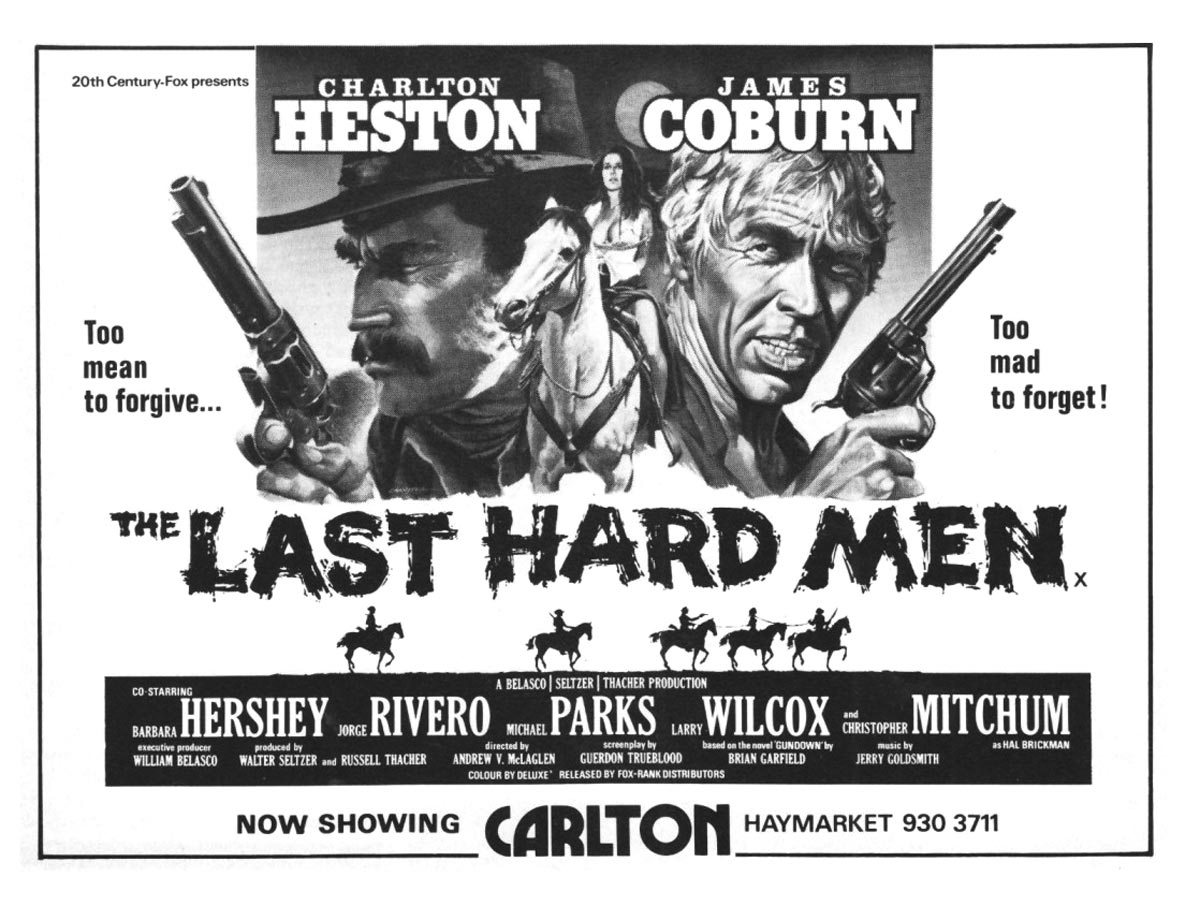
Leonard Maltin hated the film, calling it “repellently violent and tasteless,” saying that the brutal Western was “saved only by [Michael] Parks’ interesting performance as a reform-minded sheriff.” And Parks is truly great in this (as he is in everything). Charlton Heston, usually a very high-volume actor, plays Sam Burgade, the retired Sheriff who has turned the badge over to Parks’ levelheaded character, Noel Nye. Heston is practically unrecognizable in this film as he becomes Burgade, only letting his passionate “up to eleven” acting intensity come through towards the finale when Burgade faces his nemesis, Provo (James Coburn), the man who has come back to town for revenge. Watching Coburn and Heston face off is the sexiest and most wonderful itch you can’t scratch. This fully engaging Western allows us to breathlessly follow the journey of two extraordinary actors as they generate enough narrative and character-driven anticipation to make Hitchcock weep.
The story, based upon a novel by Brian Garfield (of Death Wish fame), is fairly easy: Sam Burgade (Heston) comes out of sheriff retirement to chase down Provo (Coburn) and his prison-break gang because they’ve kidnapped Burgade’s daughter. But it’s not the gang he’s after, and it’s not the daughter that Provo cares about. It’s a final showdown between Burgade and Provo. While there is a hefty amount of murder, rape and abuse that occurs in between abduction and final showdown, it was really always about the (always somewhat homoerotic) relationship between the two men. These kiss-or-kill man-on-man finale showdown scenes usually have at least a little bit of homosexual panic to them. Especially, in this case, since Provo made a point of saying that he “hadn’t had a woman in 11 years” earlier in the film and doesn’t seem to be interested in anything else but meeting up (and then destroying) his one obsession – Sam Burgade.
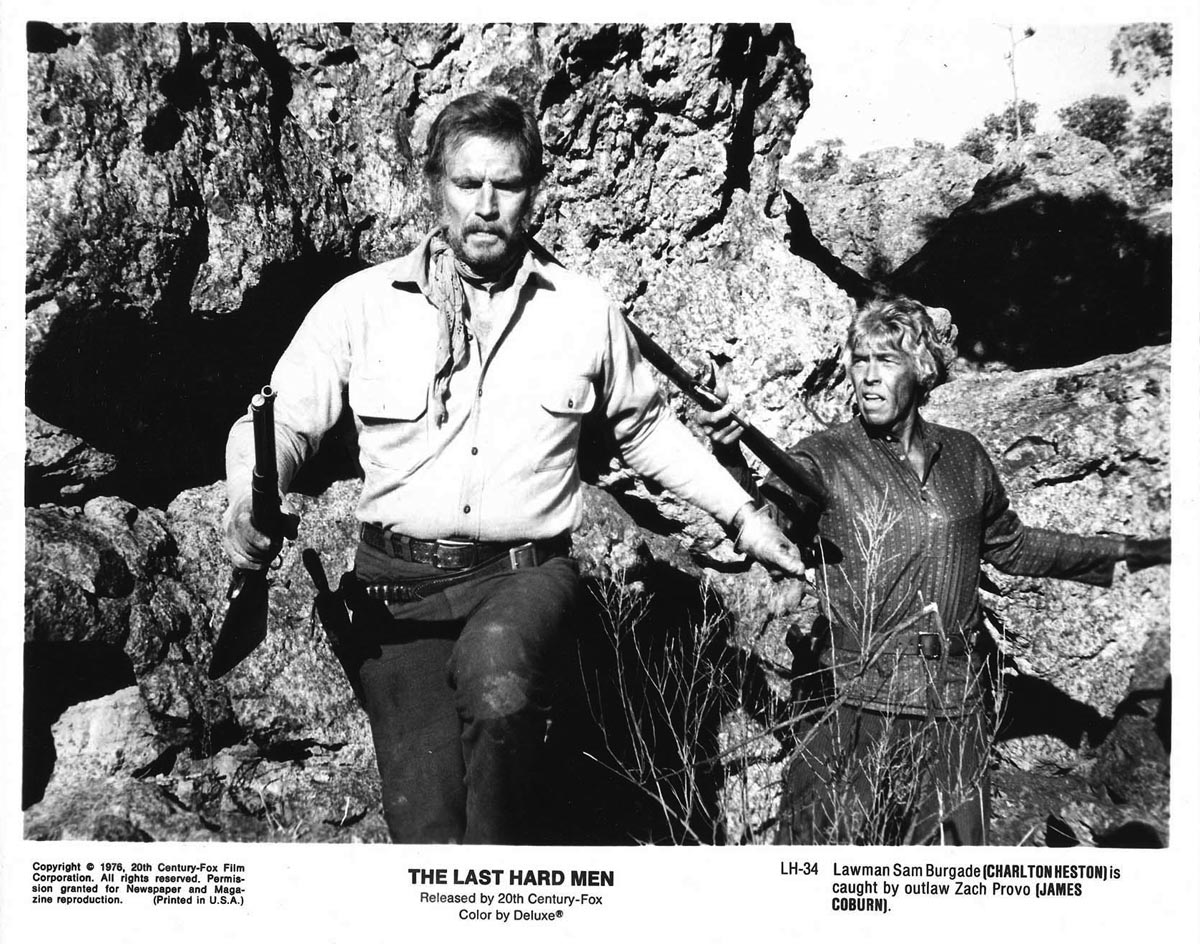
Scripted by Guerdon Trueblood, it’s not surprising that this Western manifests itself as a dark, blood-drenched revenge story. Both Brian Garfield and Guerdon Trueblood were figures whose creative work reflected a certain predilection for the grim. Brian Garfield’s literature included westerns, spy work and crime novels but is best recognized for the books that were adapted into films: Death Wish (1972), Hopscotch (1975) and Gun Down (1971) (which became The Last Hard Men). None of these books were optimistic or happy. They were bleak and dealt with vigilantism, revenge and corruption. While the film adaptation of Hopscotch (Ronald Neame, 1980) was comedic, the book was less so. As for Trueblood, he scripted Richard Compton’s gut-wrenching post-Vietnam film Welcome Home, Soldier Boys (1971) as well as the wildly entertaining TV Movie starring Michael Parks, The Savage Bees (Bruce Geller, 1976). Trueblood’s directorial debut was the grindhouse classic The Candy Snatchers (1973). While it is widely considered to be a high caliber example of the grindhouse genre, it’s quite unsettling.
Garfield did some rewrites to The Last of the Hard Men script (at that point the film was under the working title, Burgade). He mentioned that he didn’t really have to change much at the end of the day. It was just bits and pieces. Garfield commented, “Mainly it was just discarding long speeches (you can have those in a novel but not in a movie) and condensing scenes and setting some things aside. We did most of this on the set while shooting, and to tell the truth I wasn’t called on to do much. Most of the changes were obvious ones. I do remember one scene where Heston was supposed to deliver a half-page of dialogue about growing old. Heston threw out virtually all the dialogue and replaced it with a) digging a pair of glasses out of his pocket to read a telegram, and b) having trouble getting on his horse. It was a much more effective way to convey the same information.”
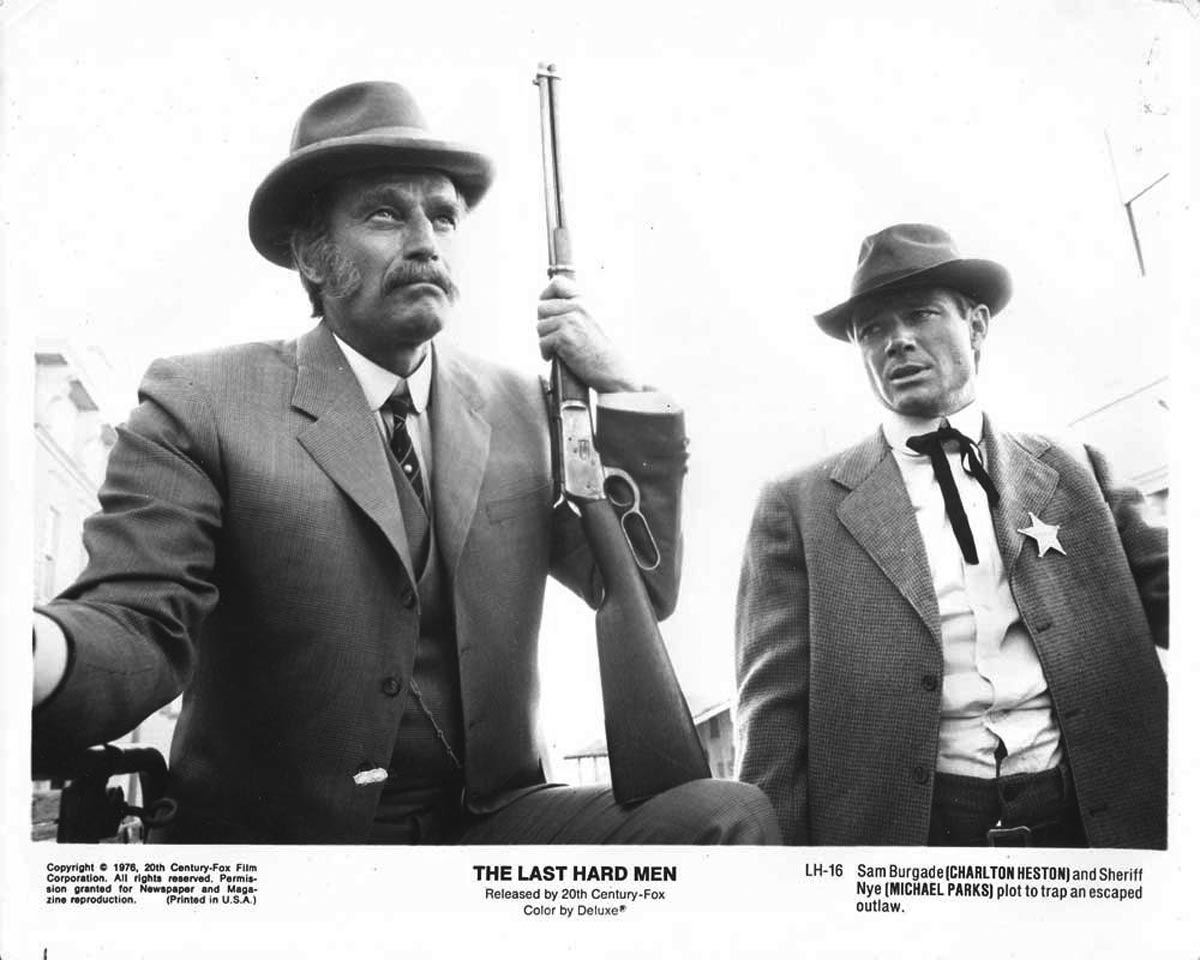
Shooting for the film began in October and ended in December of 1975, taking place in and around the areas of Tucson, San Manuel, Rio Rico, Mammoth, Gates Pass, Winkelman and Nogales, Arizona. One of the more notable locations of shooting (and one featured in the end credits) was Old Tucson Studios. Originally built for the Wesley Ruggles’ Western Arizona (1940), featuring Jean Arthur and William Holden, these sets have been used for some of the most outstanding Westerns in film history. From 3:10 to Yuma (Delmer Daves, 1957) and Rio Bravo (Howard Hawks, 1959) to The Deadly Companions (Sam Peckinpah, 1961) and The Outrage (Martin Ritt, 1964), Old Tucson has been the landscape for the Old West. Strangely enough, these sets were also used for the Brian Garfield film adaptation of Death Wish (Michael Winner, 1974) and another Michael Parks-Andrew V. McLaglan project, Royce (Andrew V. McLaglan, 1976), which must have shot right after TLHM.
Various cast members had worked together before on other projects. The charismatic Robert Donner (Lee Roy) had a swoon-worthy resume. Aside from Cool Hand Luke (Stuart Rosenberg, 1967) and Vanishing Point (Richard C. Sarafian, 1971) he rocked it in High Plains Drifter (Clint Eastwood, 1973). John Quade whose role as Gant in TLHM is as stomach turning as it is horrifying is a hellova talented actor. He was also in High Plains Drifter (Clint Eastwood, 1973), and had roles in Bad Company (Robert Benton, 1972), The Sting (George Roy Hill, 1973) and The Outlaw Josey Wales (Clint Eastwood, 1976).
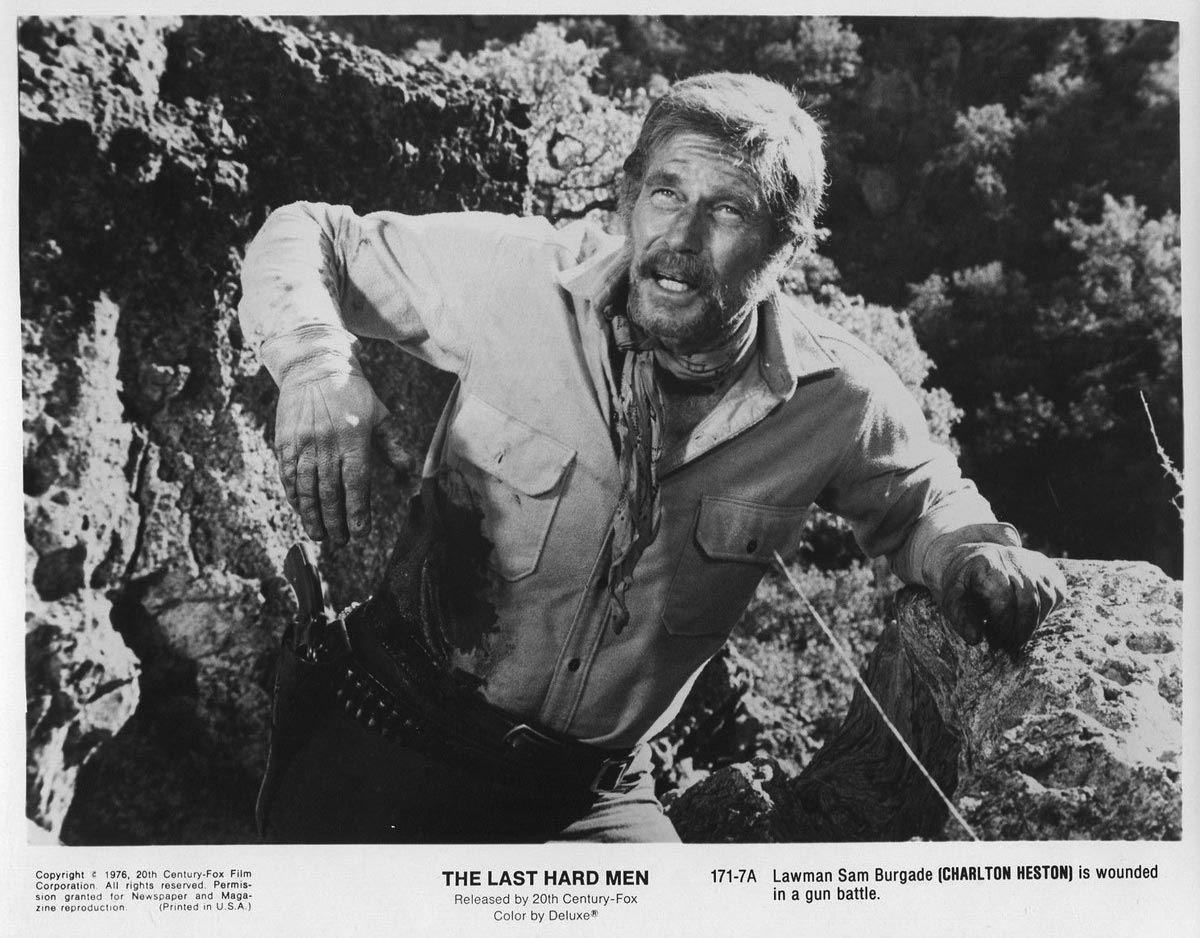
Special mention: the lovely (and underappreciated) Riley Hill is in this film playing Gus. With all the insanity that goes on, he may breeze by you but I want to take a moment to appreciate this incredible man. Much of the work he did was uncredited, but he was there. For all of it. He was a working actor. From 1937 onwards, he worked. He was on every Western TV show – from The Lone Ranger (1950-51) and The Gene Autry Show (1951-52) to The Adventures of Kit Carson (1951-53) and The Roy Rogers Show (1951-53). He appeared in films from old school “oaters” to more modern work like Rio Bravo (Howard Hawks, 1959), The Deadly Companions (Sam Peckinpah, 1961) and The Outsider (Delbert Mann, 1961). Sadly, Hill has remained incredibly obscure and never really gotten credit for his performances except in films like TLHM. So give old Riley a hand, won’t you?
Due to the vicious content of TLHM, the Motion Picture Association of America (MPAA) and the Code and Ratings Administration (CARA) had given the film an X-rating. A slow motion rape sequence, filthy language, killers lacking even an iota of remorse…this was certainly enough to make the MPAA and CARA sit up and pay attention. But the producers fought that X-rating. Just previous to TLHM getting their X, All the President’s Men (Alan J. Pakula, 1976) had been through a similar incident. President’s was originally rated R due to vulgar language, although the film itself had no inappropriate content. Jack Valenti even said that it would have gotten a G had it not been for what he called the “language factor.” But the producers resubmitted the film and were met with a PG rating, having changed nothing.
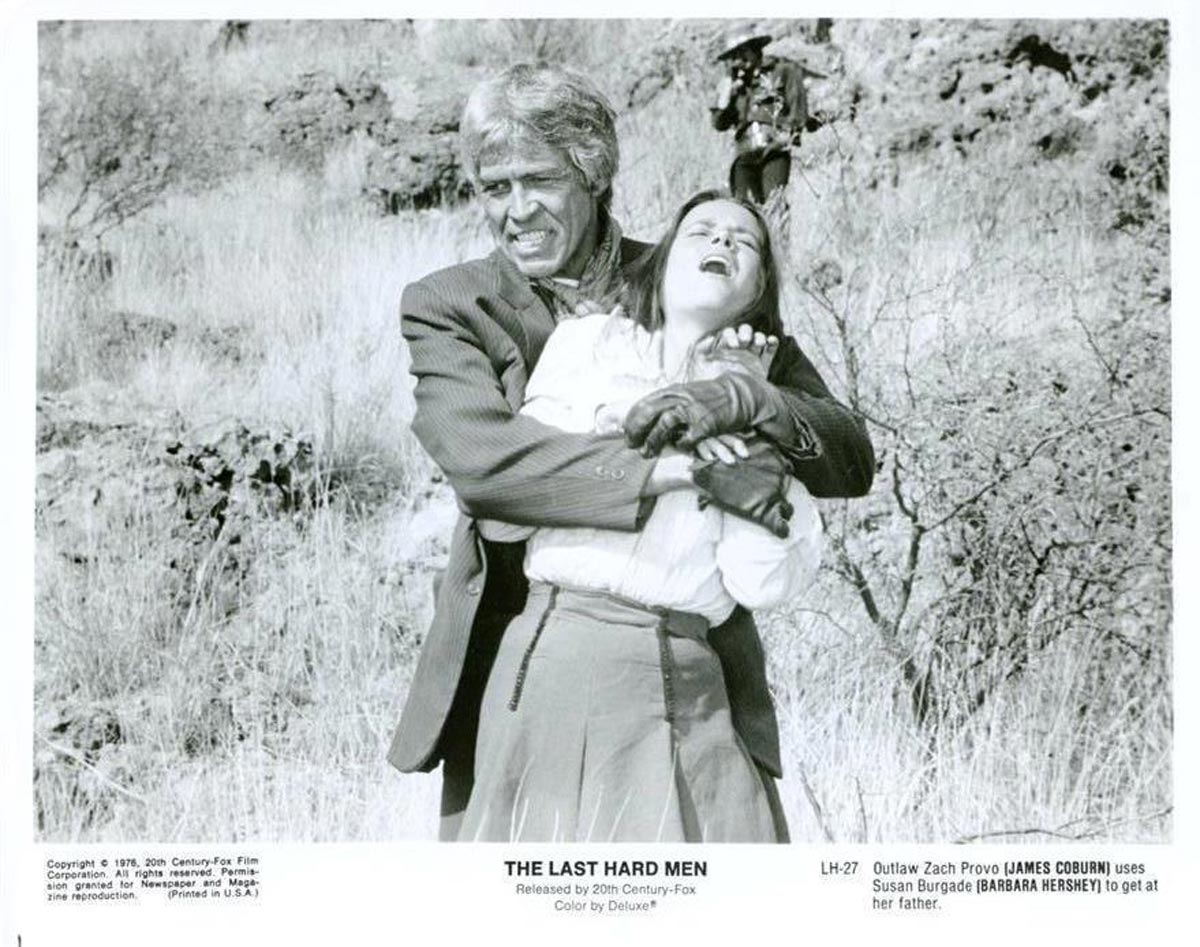
While the President’s case was a watershed moment for rating films according to language, TLHM had much more than language to worry about. Slashed throats, ripped dresses, gut shots *as well as* rough language topped the list. CARA had said that they would consider an R if they could play down the “threat of violent outbursts.” This was laughable. It was like telling a cat not to shed or a dog not to wag its tail. One of the brilliant features of The Last Hard Men is that it plays off of the threat of violent outbursts. That is where the film finds its rhythm, builds its suspense and how the characters work with one another. Clearly this was a no-go. The producers and 20th Century Fox advocated the importance of the violence within the film, noting that within the kidnapping and rape narrative of course there would be significant violent actions. How could anyone expect these actions to simply be accepted or acceptable? So, due to the fact that CARA now had a precedent of being able to re-rate a film, The Last Hard Men was given a R-rating, and (like President’s) didn’t have to alter a single frame.
The Last Hard Men comes off like a perfect storm of Spaghetti Westerns and Peckinpah madness. If you don’t have the tolerance for those or cannot stomach their lack of concern for human life, this may not be the film for you. If, like me, you think that those movies are the cat’s pajamas, you better get yourself a ticket for The Last Hard Men immediately. The Last Hard Men plays as part of a brain-melting, mind-blowing western triple feature at the New Beverly on August 20th and August 21st.

